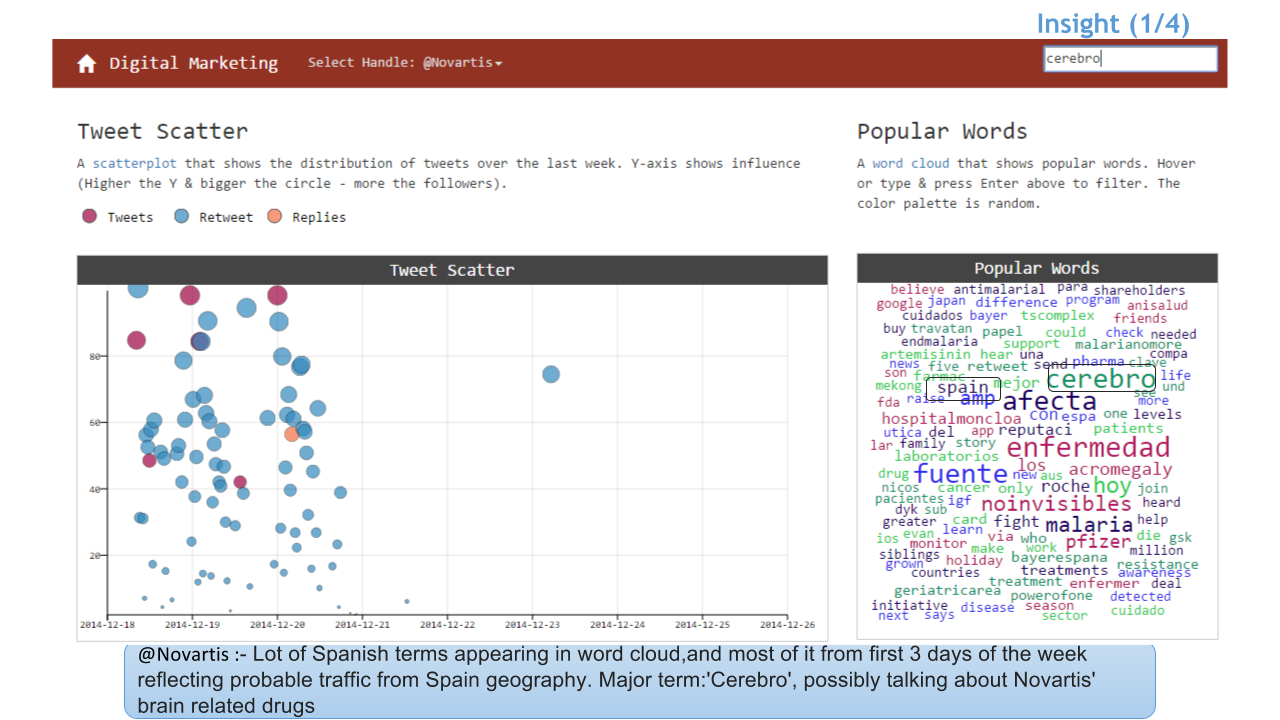It's essential for healthy bones, teeth, gums, and blood vessels. Ask your doctor if supplements are right for you.Vitamin EVitamin E is an antioxidant and helps protect cells from damage. It is also important for the health of red blood cells.Vitamin E is found in many foods, such as vegetable oils, nuts, and green leafy vegetables. It's also added to some breakfast cereals.Teens should get 2.4 micrograms of vitamin B12 daily.Vitamin B6Vitamin B6 is important for normal brain and nerve function. It helps maintain healthy skin and is important for nerve function.You'll find niacin in red meat, poultry, fish, fortified hot and cold cereals, and peanuts.Teen guys need 16 mg of niacin daily. It is also needed to make DNA.Liver, dried beans and other legumes, green leafy vegetables, asparagus, and orange juice are good sources of this vitamin.
So are fortified bread, rice, and cereals.Teen girls and guys need 400 micrograms of folate daily. Although more supplementation studies are needed, ensuring vitamin D adequacy throughout childhood and adolescence seems prudent. According to the Endocrine Society, at least 600 IU/day may be required to maximize bone health, and 1,000 IU/day may be needed to increase serum levels above 30 ng/mL (75 nmol/L) .
Given the average vitamin D content of the diets of adolescents, supplementation may be necessary to meet this recommendation. All of them are essential for the healthy growth and development of teenage boys. You can find the different types across various foods, including beans, dairy products, grains, and leafy greens. If your teenager is on a strictly vegetarian diet, you might want to consider multivitamin supplements that contain these essential nutrients. The RDA of magnesium for those aged 14 to 18 years, 410 mg/day for boys and 360 mg/day for girls, was derived from results of balance studies in adolescents.
Good dietary sources of magnesium include nuts, and green leafy vegetables because magnesium is part of chlorophyll — the green pigment in plants. Meats and milk have an intermediate magnesium content, with milk providing mg per cup . Although data are limited, some studies have found that a large percentage of adolescents have magnesium intakes below recommended levels ( ).
In an analysis of NHANES data, US adolescents who consumed milk had higher daily magnesium intakes than adolescents who did not drink milk . However, NHANES data show that US adolescents (12-19 years) on average only consume about 1 cup of milk daily . Low-fat milk, nuts, whole grains, and green leafy vegetables are important sources of magnesium for adolescents.
If adolescents do not meet the RDA through dietary sources, LPI recommends a combined magnesium-calcium supplement. Specifically, data used by the FNB to determine calcium accretion came from a recent longitudinal study in 642 Caucasian adolescents aged 14 to 18 years . Thus, the RDA was set at 1,300 mg/day; this level of calcium intake is expected to cover the needs of 97.5% of adolescents. Vitamin B6 is required for heme synthesis and in the synthesis and metabolism of amino acids— the building blocks of proteins. Thus, the vitamin has obvious relevance to adolescent growth and health. Dietary intake recommendations of vitamin B6 for adolescents were established by extrapolating data from adults, using metabolic body weight and accounting for growth.
The RDA for boys aged 14 to 18 years is 1.3 mg/day, and the RDA for girls aged 14 to 18 years is 1.2 mg/day . Only a few studies have evaluated vitamin B6 status specifically in adolescents. The same investigators found more than 40% vitamin B6 inadequacy when a group of 112 adolescent girls (12- and 14-year-old) were followed for two years . For information on dietary sources of the vitamin, see the article on Vitamin B6.
Vitamin A intake recommendations for adolescents were derived by extrapolating the recommendation for adults using metabolic body weight, accounting for growth. For information on vitamin A content in foods, see the article on Vitamin A. Rainbow Light's multivitamin is a completely food-based multivitamin supplement. It is a special formula designed to encourage the healthy growth and development of a teenage boy's brain.
It is a product entirely free of dairy products and gluten, containing the essential nutrients you boy needs to remain calm and focused. This may be of major concern in light of the sizeable numbers of subjects in many countries with serum 25D3 levels below 50 nmol/l, especially during winter. However, much of this evidence is from studies in adults and whether poor vitamin D status in childhood is a risk factor for these chronic diseases is less well understood. Moreover, the biochemical definition commonly used to classify an adult as marginally vitamin D deficient, or vitamin D insufficient, may not be appropriate for use in children and/or adolescents. The present review will begin with a brief recap of the physiological roles of vitamin D, and then will briefly consider the issue of defining vitamin D status.
Finally, some possible modes of addressing low vitamin D status in childhood and adolescence will be considered. According to Holick,54 approximately 30 min of skin exposure of the arms and face to sunlight can provide all the daily vitamin D needs of the body. When sunlight exposure is limited, dietary intakes of vitamin D, if sufficient, can make a significant contribution to vitamin D status. The formulas also contain vitamin D, magnesium and zinc which contribute to the maintenance of normal bone health.
The amount of bioavailable iron in food is influenced by the iron nutritional status of the individual and also by the form of iron . Individuals who are anemic or iron deficient absorb a larger percentage of the iron they consume than individuals who are not anemic and have sufficient iron stores . Although heme iron generally accounts for only 10-15% of the iron found in the diet, it may provide up to one third of total absorbed dietary iron . The absorption of nonheme iron is strongly influenced by enhancers and inhibitors present in the same meal.
For instance, vitamin C strongly enhances the absorption of nonheme iron by reducing dietary ferric iron (Fe3+) to ferrous iron (Fe2+) and forming an absorbable, iron-ascorbic acid complex. Organic acids, such as citric, malic, tartaric, and lactic acids, also enhance nonheme iron absorption. Further, consumption of meat, poultry, and fish enhance nonheme iron absorption, but the mechanism for this increase in absorption is not clear . Inhibitors of nonheme iron absorption include phytic acid, which is present in legumes, grains, and rice. Polyphenols found in some fruit, vegetables, coffee, tea, wines, and spices can also markedly inhibit the absorption of nonheme iron, but this effect is reduced by the presence of vitamin C .
Soy protein, such as that found in tofu, has an inhibitory effect on iron absorption that is independent of its phytic acid content . Vitamin C has a number of important roles during growth and development, including being required for the synthesis of collagen, carnitine, and neurotransmitters . Vitamin C is also a highly effective antioxidant and is important for immunity .
Further, vitamin C strongly enhances the absorption of nonheme iron by reducing dietary ferric iron (Fe3+) to ferrous iron (Fe2+). Specifically, iron absorption is two- to three-fold higher with co-ingestion of 25 to 75 mg of vitamin C . This has special relevance to adolescent health, considering the fact that iron deficiency is prevalent among adolescents, especially girls . The RDA for adolescents aged 14 to 18 years, which was extrapolated from recommendations for adults based on relative body weight, is 75 mg/day and 65 mg/day of vitamin C for boys and girls, respectively .
Vitamin A supplements are helpful for children who have a vitamin A deficiency. And some kids may be getting too much vitamin A — consuming excessive levels of preformed vitamin A in liver, dairy products, fish oil, multivitamins, and certain vitamin-fortified foods. It has always been assumed that adolescents are not at risk of low vitamin D status; however, a number of recent studies have shown this not to be the case, especially during winter. In contrast, younger children seem to have a lower prevalence of low vitamin D status.
The reasons for the high prevalence of vitamin D insufficiency during adolescence are unclear. Unfortunately, much research effort is still needed to identify what the optimal dietary recommendation for vitamin D should be. Severe iron deficiency leads to iron-deficiency anemia; anemia affects more than 30% of the global population .
Adolescents have increased requirements for iron due to rapid growth. Following puberty, adolescent girls have lower iron stores compared to adolescent boys . An optimum nutritional intake during adolescence and young adulthood can help set the stage for lifelong health. Teenagers need to have sufficient vitamins and minerals to ensure healthy development during growth spurts, plus as they undergo significant physical and biochemical changes in their bodies. So the importance of obtaining the right nutrients in the diet is vital, just at a time when this may not be a top priority for some busy teenagers.
Vitamin D is a fat-soluble vitamin that is essential for maintaining normal calcium metabolism and is therefore necessary for bone health. The growth plates of bones continue to enlarge, but in the absence of adequate mineralization, weight-bearing limbs become bowed. It helps the body absorb calcium, which is the major component of bone structure. During adolescence, adequate vitamin D is particularly critical for boys because of rapid skeletal growth.
Without it, bones don't mineralize properly, and can become soft and bowed, a condition known as rickets. In addition, low levels of vitamin D during teen years can affect peak bone mass and height. During a boy's teen years, make sure he meets the recommended dietary allowance of 600 international units, or 15 micrograms, set forth by the Food and Nutrition Board of the Institute of Medicine. Vitamin C helps your body absorb iron, a mineral that facilitates the transportation of oxygen through your blood stream and helps regulate cell growth. Vitamin C helps to keep your cells healthy and, as an antioxidant, may protect you from illness.
The recommended daily intake is 75 milligrams of vitamin C for teen boys and 65 milligrams for teen girls. Adding a variety of foods to a teen's diet can help her get what she needs, and supplementing with multivitamins may benefit some teens. It consists of some of the core nutrients like Vitamins A, B, C, D, K2, and the B-Complex. Some of the minerals they include are folic acid, calcium, iron, and niacin, among many more. The specialized formulation is ideal for teenage boys of growing age. It promotes better health, healthy muscle growth; it boosts the immune system and improves the cell function in your teenage boy.
Despite the abundance of iron in the United States food supply through natural, enriched and fortified food sources, teens may be consuming less of this mineral than their developing bodies require. Adolescent girls, especially, tend to have lower intakes of foods that provide iron. Children and adolescents from food-insecure households are at greater risk of not getting enough iron than their peers who have easier access to food. Girls are also at increased risk of iron deficiency due to iron loss during menstruation. If teens are following calorie-restrictive diets to lose or manage weight, that may affect iron intake, and vegetarian or vegan teens may also be at risk of not getting enough iron. However, when accounting for intake from fortified foods, less than 5% of individuals in that age group have intakes below the EAR .
The US Food and Drug Administration implemented legislation in 1998 requiring the fortification of all enriched grain products with folic acid . Globally, more than 50 countries have mandatory programs of wheat-flour fortification with folic acid, but flour fortification is not common in Europe . Dietary folate inadequacy is common among adolescents in European nations, especially girls . Vitamin A promotes proper bone growth and tooth development, making it a vital nutrient for all children and adolescents.
According to the Linus Pauling Institute, teens in industrialized countries tend to have low intakes of vitamin A, which is a necessary nutrient for adolescent development. Teen boys should get 900 micrograms, or 3,000 international units, of vitamin A per day, while teen girls need 700 micrograms, or 2,333 international units of vitamin A daily. It has a unique formula that consists of multiple vitamins and minerals in the right combination to help your teenage boy maintain strength, healthy growth, and optimal development. It helps boost their energy levels for physical activities, contains 100% organic ingredients, and it is even 100% approved for vegetarian consumption.
A deficiency in minerals and essential vitamins in teenage boys can have adverse effects on the growth and development of secondary sexual characteristics in them as they grow. The deficiency of essential nutrients can lead to poor performance in physical activities and sports. Anyone who struggles to eat a healthy, varied, and balanced diet may benefit from taking supplements. For teenagers, it may be helpful to take iron, calcium, and vitamin D if you feel you are lacking these essential vitamins and minerals. Before you or your teenager start taking any new supplements it's a good idea to check with your GP or a pharmacist.
For those with children who have restricted diets, illnesses or conditions, a daily dose of vitamins may be recommended by your pediatrician. For instance, if your child doesn't consume dairy, your doctor may recommend a calcium supplement. (Although, it's important to note that calcium exists in many non-dairy foods, including beans, fish, tofu, spinach and others.) Or, if your child has cystic fibrosis, fat-soluble supplements may be needed. While many young children are picky eaters, that doesn't necessarily mean that they have nutritional deficiencies.
What Vitamins Should a 16 year old boy take Many common foods — including breakfast cereal, milk and orange juice — are fortified with important nutrients, such as B vitamins, vitamin D, calcium and iron. So your child may be getting more vitamins and minerals than you think. Certain vegetables and grains also provide calcium, but their bioavailability is lower compared with dairy.
For more information on dietary sources of calcium and calcium bioavailability, see the article on Calcium. The Nutrition Facts label of packaged foods lists calcium content in one serving as a percent of the Daily Value , with the DV being 1,000 mg. Since the RDA for adolescents is 1,300 mg/day, the percentage of the DV listed on the food label would be an overestimation of the percentage of the RDA.
If adolescents do not meet the RDA through diet alone, LPI recommends supplemental calcium. Multivitamin/mineral supplements generally provide no more than 200 mg of calcium. Vitamin A is a fat-soluble vitamin that is essential for growth and development, normal vision, the expression of selected genes, immunity, and reproduction . Vitamin A deficiency in children and adolescents is a major public health problem worldwide, especially in less developed countries .
Even marginal or subclinical deficiencies in vitamin A may have adverse effects on bone growth and sexual maturation of adolescents . Because of its role in immunity, inadequate intake of this vitamin also increases risk for infectious diseases . Ritestart Chewables are another phenomenal multivitamin supplement that teenage boys can rely on to receive their daily dose of vital minerals and vitamins that boost their growth and overall health. Each box contains 120 chewable tablets, and each of them contains 22 crucial vitamins and nutrients.
These multivitamins are loaded with B Vitamins that help the production of energy in a teenage boy as well as boosting carbohydrate metabolism. It also consists of key electrolytes necessary for proper muscle function. Additionally, each dose provides a variety of essential minerals, antioxidants, and vitamins that support immunity, skin health, and overall fitness in teenage boys. It's important for teenagers to get all the necessary vitamins daily. However, several vitamins are particularly important for growth, development and sustained energy levels.
































No comments:
Post a Comment
Note: Only a member of this blog may post a comment.